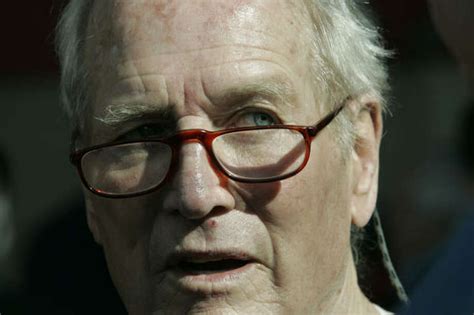
Bob Stewart, the Emmy-winning creator and producer behind iconic game shows such as “The Price Is Right,” “To Tell the Truth,” and “Password,” has died at the age of 83 after a long and courageous battle with illness. Stewart’s innovative contributions to the world of television game shows left an indelible mark on the industry, shaping the landscape of daytime programming for generations.
Bob Stewart’s career in television began in the 1950s, but it was in the realm of game shows that he truly made his mark. He didn’t just create shows; he crafted experiences that captivated audiences with their simple yet engaging formats, clever writing, and relatable contestants. Stewart’s influence can be seen in the enduring popularity of the shows he developed, many of which continue to be staples of television programming to this day. His shows were known for their fast-paced action, humor, and the opportunities they provided for ordinary people to win significant prizes. Stewart understood the appeal of game shows, tapping into the human desire for entertainment, competition, and the chance to achieve instant fortune.
One of Stewart’s earliest successes was “The Price Is Right,” which he developed for Mark Goodson-Bill Todman Productions in 1956. While the show had a previous iteration, it was Stewart who refined the format, adding elements that would become synonymous with the show, such as the Showcase Showdown and the various pricing games that contestants played to win prizes. The show became a cultural phenomenon, spawning numerous international versions and running continuously in the United States for over five decades, making it the longest-running game show in television history.
“To Tell the Truth,” another of Stewart’s creations, premiered in 1956 and featured a panel of celebrities who had to guess which of three contestants was telling the truth about their identity or experience. The show’s clever premise and engaging banter between the panelists and contestants made it a hit with viewers. “Password,” which debuted in 1961, pitted two teams against each other as they tried to guess a secret word using one-word clues. The show’s simple rules and fast-paced gameplay made it a favorite among audiences of all ages.
Stewart’s success was not limited to these three shows. He also created or co-created other popular game shows, including “The $10,000 Pyramid” (later known as “The $20,000 Pyramid” and “The $100,000 Pyramid”), “Eye Guess,” and “Chain Reaction.” Each of these shows bore Stewart’s signature touch: clever concepts, engaging gameplay, and the ability to draw viewers in and keep them coming back for more. “The $10,000 Pyramid” was particularly notable for its celebrity guests, who added star power and comedic flair to the proceedings.
Throughout his career, Stewart won multiple Emmy Awards for his work in television. He was recognized for his outstanding contributions to the genre of game shows and for his ability to create programming that resonated with audiences on a deep level. His shows were not just entertainment; they were cultural touchstones that brought families together and provided a sense of community. Stewart’s legacy extends far beyond the awards and accolades he received. His true legacy lies in the countless hours of enjoyment he brought to viewers around the world and in the enduring impact he had on the television industry.
Stewart’s approach to creating game shows was rooted in a deep understanding of human psychology. He knew what motivated people to watch television and what kept them engaged. He understood the importance of creating relatable characters, building suspense, and providing moments of both humor and drama. He also recognized the power of interactivity, giving viewers the opportunity to play along with the contestants from the comfort of their own homes.
Stewart’s shows were also notable for their clean and wholesome entertainment value. In an era when television programming was often criticized for its lack of substance, Stewart’s game shows offered a refreshing alternative. They were shows that families could watch together without fear of being exposed to objectionable content. This commitment to quality and family-friendly entertainment was a key factor in Stewart’s success.
In addition to his work as a creator and producer, Stewart was also a mentor to many aspiring television professionals. He was known for his generosity and willingness to share his knowledge and experience with others. He helped to launch the careers of numerous writers, producers, and on-screen talent. His influence can be seen in the work of many of today’s leading game show creators and producers.
Stewart’s death marks the end of an era in television history. He was one of the last of the great game show pioneers, a visionary who helped to shape the landscape of daytime programming for generations. His shows will continue to be enjoyed by audiences around the world for many years to come, a testament to his enduring legacy. The world of television has lost a true icon, but his contributions to the industry will never be forgotten. He leaves behind a legacy of innovation, creativity, and a deep understanding of what makes television entertaining and engaging. His shows were more than just game shows; they were cultural phenomena that brought people together and provided a sense of community. Bob Stewart will be remembered as a true giant of the television industry, a man who made a lasting impact on the world of entertainment.
Stewart is survived by his family, friends, and the countless fans who enjoyed his work over the years. His contributions to the world of television will continue to be celebrated for generations to come. Details regarding memorial services or tributes have yet to be released. However, it is expected that the television industry will pay homage to his remarkable career and the impact he had on the medium.
Frequently Asked Questions (FAQ)
1. What was Bob Stewart known for?
Bob Stewart was best known as the creator and producer of several iconic game shows, including “The Price Is Right,” “To Tell the Truth,” and “Password.” He was a major figure in the development of the game show format and significantly impacted daytime television programming. His shows were characterized by simple, engaging gameplay, and their broad appeal led to long-lasting popularity. Stewart’s innovative ideas and understanding of audience engagement made him a celebrated figure in the television industry. He won multiple Emmy Awards for his contributions.
2. What were some of Bob Stewart’s most successful game shows?
Stewart’s most successful game shows include:
- The Price Is Right: A long-running game show where contestants bid on merchandise and play pricing games to win prizes.
- To Tell the Truth: A panel game show where celebrities try to identify which of three contestants is telling the truth about a specific experience.
- Password: A word-association game where two teams compete to guess a secret word using one-word clues.
- The $10,000 Pyramid (later The $20,000 Pyramid and The $100,000 Pyramid): A game show where contestants team up with celebrities to guess words or phrases based on clues.
- Eye Guess: A visual memory game show.
- Chain Reaction: A word association game.
These shows were all known for their engaging formats, humor, and opportunities for contestants to win prizes.
3. How did Bob Stewart influence the game show genre?
Bob Stewart significantly influenced the game show genre by creating formats that were simple, easy to understand, and highly engaging for audiences. He had a knack for designing games that were both entertaining and interactive, allowing viewers to play along from home. His shows often featured relatable contestants and offered a mix of suspense, humor, and the potential for significant prize winnings. Stewart’s innovations helped popularize the game show format, making it a staple of daytime television programming for decades. He also understood the importance of clean, wholesome entertainment, which made his shows appealing to families. His work inspired many other game show creators and producers.
4. What impact did “The Price Is Right” have on television history?
“The Price Is Right” has had a profound impact on television history. Created and refined by Bob Stewart, it became the longest-running game show in television history, with a continuous run in the United States spanning over five decades. The show’s format, including the Showcase Showdown and various pricing games, became iconic and recognizable to generations of viewers. “The Price Is Right” has been adapted into numerous international versions, further solidifying its global impact. The show’s enduring popularity demonstrates its ability to connect with audiences across different cultures and time periods. It has also served as a launching pad for many television personalities and has become a cultural touchstone, often referenced in other forms of media. Its longevity and widespread appeal make it one of the most influential and successful game shows ever created.
5. Did Bob Stewart win any awards for his work?
Yes, Bob Stewart won multiple Emmy Awards for his contributions to television. These awards recognized his outstanding achievements in the game show genre and his ability to create programming that resonated with audiences. His Emmy wins underscored his importance as a creator, producer, and innovator in the television industry. The specific details of each Emmy win (year and category) would require consulting awards databases, but his recognition by the Academy of Television Arts & Sciences highlights his significant impact and the quality of his work.
Expanded Article:
Bob Stewart, the visionary creator and producer behind some of television’s most beloved and enduring game shows, including “The Price Is Right,” “To Tell the Truth,” and “Password,” passed away at the age of 83 after a courageous battle with a prolonged illness. His innovative contributions to the world of television entertainment have left an indelible mark on the industry, shaping the landscape of daytime programming and captivating audiences for generations.
Stewart’s journey in the world of television began in the 1950s. However, it was his profound understanding of audience engagement and his knack for creating simple yet captivating game show formats that truly cemented his legacy. He was not merely a creator of shows; he was an architect of experiences, crafting programs that resonated with viewers on a deeply personal level. His creations were characterized by their fast-paced action, clever writing, and, most importantly, their focus on relatable contestants. Stewart understood the fundamental appeal of game shows, tapping into the universal human desires for entertainment, competition, and the tantalizing possibility of achieving instant fortune.
One of Stewart’s earliest and most enduring successes was “The Price Is Right,” which he developed for the esteemed Mark Goodson-Bill Todman Productions in 1956. While the show had a previous incarnation, it was Stewart who meticulously refined the format, introducing elements that would become irrevocably synonymous with the program. These included the iconic Showcase Showdown, where contestants spun a wheel to get as close to $1.00 without going over, and the diverse array of pricing games, each designed to test contestants’ knowledge of product values and their ability to make strategic decisions. The show transcended mere entertainment, evolving into a cultural phenomenon that spawned numerous international adaptations and ran continuously in the United States for over five decades. This remarkable achievement cemented its status as the longest-running game show in television history, a testament to Stewart’s genius and the show’s enduring appeal.
“To Tell the Truth,” another of Stewart’s ingenious creations, premiered in 1956 and presented a unique premise: a panel of celebrity judges tasked with discerning which of three contestants was genuinely telling the truth about their identity or a specific experience. The show’s clever concept, combined with the engaging banter between the panelists and the contestants, made it an instant hit with viewers. The celebrities’ attempts to uncover the truth often led to humorous exchanges and unexpected revelations, adding an element of unpredictability that kept audiences entertained.
“Password,” which debuted in 1961, offered a different kind of challenge, pitting two teams against each other in a battle of wits and word association. The teams were tasked with guessing a secret word using only one-word clues provided by their teammates. The show’s simple rules, fast-paced gameplay, and the pressure of limited time made it a favorite among audiences of all ages. The ability to quickly connect seemingly unrelated words and to think strategically under pressure was key to success, adding an intellectual dimension to the entertainment.
Stewart’s success was by no means limited to these three iconic shows. He also created or co-created other popular and critically acclaimed game shows, including “The $10,000 Pyramid” (later known as “The $20,000 Pyramid” and “The $100,000 Pyramid”), “Eye Guess,” and “Chain Reaction.” Each of these shows bore Stewart’s unmistakable signature touch: cleverly conceived concepts, engaging gameplay, and an uncanny ability to draw viewers in and keep them eagerly anticipating the next episode. “The $10,000 Pyramid” was particularly noteworthy for its inclusion of celebrity guests, who added star power and comedic flair to the proceedings. The dynamic between the celebrities and the contestants often led to memorable moments and hilarious exchanges.
Throughout his illustrious career, Stewart was honored with numerous Emmy Awards in recognition of his exceptional work in television. He was celebrated for his outstanding contributions to the genre of game shows and for his unparalleled ability to create programming that resonated with audiences on a profound level. His shows were not merely sources of entertainment; they were cultural touchstones that brought families together, fostering a sense of community and shared experience. Stewart’s legacy extends far beyond the accolades and prestigious awards he received. His true legacy lies in the countless hours of enjoyment he brought to viewers around the world and in the enduring impact he had on the television industry.
Stewart’s unique approach to creating game shows was deeply rooted in a profound understanding of human psychology. He possessed an innate sense of what motivated people to watch television and, more importantly, what kept them consistently engaged. He recognized the paramount importance of creating relatable characters, building suspense to heighten the stakes, and seamlessly incorporating moments of both humor and genuine drama. He also keenly understood the power of interactivity, offering viewers the opportunity to actively participate in the games from the comfort and convenience of their own homes. This sense of participation created a deeper connection between the viewers and the shows, enhancing their enjoyment and fostering a sense of loyalty.
Stewart’s shows were also distinguished by their commitment to providing clean and wholesome entertainment. In an era when television programming was often subject to criticism for its perceived lack of substance and questionable content, Stewart’s game shows offered a refreshing and welcome alternative. They were shows that families could watch together without any fear of encountering objectionable material. This unwavering commitment to quality and family-friendly entertainment was a critical factor in Stewart’s enduring success and widespread appeal.
Beyond his accomplishments as a creator and producer, Stewart was also widely regarded as a generous mentor to numerous aspiring television professionals. He was known for his willingness to share his extensive knowledge and invaluable experience with others, guiding and supporting those who were eager to learn the intricacies of the industry. He played a pivotal role in launching the careers of numerous writers, producers, and on-screen talent, leaving a lasting impact on the next generation of television professionals. His influence can be readily observed in the work of many of today’s leading game show creators and producers, who have undoubtedly been inspired by his innovative ideas and unwavering dedication to quality.
The passing of Bob Stewart marks the end of an era in the rich and vibrant history of television. He was one of the last of the truly great game show pioneers, a visionary whose groundbreaking work helped to shape the landscape of daytime programming for generations. His shows will undoubtedly continue to be enjoyed by audiences around the world for many years to come, serving as a timeless testament to his enduring legacy. The world of television has lost a true icon, a man whose contributions to the industry will never be forgotten. He leaves behind a lasting legacy of innovation, creativity, and a profound understanding of what makes television both entertaining and profoundly engaging. His shows were far more than just game shows; they were cultural phenomena that brought people together, fostering a sense of community and shared experience. Bob Stewart will forever be remembered as a true giant of the television industry, a man who made an indelible impact on the world of entertainment and left an extraordinary legacy for future generations to admire and emulate.
Stewart is survived by his loving family, his many cherished friends, and the countless fans who enjoyed his work throughout the years. His immeasurable contributions to the world of television will continue to be celebrated for generations to come. While details regarding memorial services or tributes have yet to be officially released, it is widely anticipated that the television industry will pay homage to his remarkable career and the profound impact he had on the medium, ensuring that his legacy endures for years to come.
Extended FAQs
1. What was Bob Stewart’s overall contribution to the television industry?
Bob Stewart’s overall contribution to the television industry was monumental. He essentially helped define and popularize the game show format as we know it today. He didn’t just create individual shows; he crafted entire universes of entertainment that resonated with a broad audience. His ability to understand what viewers wanted – simple rules, relatable contestants, high stakes, and the chance for ordinary people to win big – was unparalleled. He fostered a sense of community by bringing families together to watch and play along. Furthermore, he mentored countless individuals, shaping the future of game show production. His commitment to clean, wholesome entertainment also set a standard that many others followed. Beyond the individual successes of his shows, his lasting impact is the transformation of daytime television into a landscape filled with engaging and accessible game show formats. He elevated the genre, making it a respected and enduring part of the entertainment world. His legacy is a testament to his creativity, business acumen, and genuine love for providing entertainment to the masses.
2. How did Bob Stewart’s game shows differ from other game shows of his time?
Bob Stewart’s game shows distinguished themselves from others of his time through several key factors:
-
Simplicity and Clarity: Stewart focused on creating game shows with rules that were easy to understand and follow, making them accessible to a wide audience. The games themselves were often based on simple concepts like pricing goods (“The Price Is Right”), identifying truths (“To Tell the Truth”), or associating words (“Password”), avoiding overly complex or convoluted rules.
-
Relatability of Contestants: Stewart prioritized casting ordinary people as contestants, making it easier for viewers to connect with the participants and imagine themselves in their shoes. This contrasted with some game shows of the era that featured more polished or “professional” contestants.
-
Interactive Gameplay: Stewart’s game shows were designed to be interactive, allowing viewers to play along at home. This encouraged active engagement and fostered a sense of community around the shows.
-
Emphasis on Wholesome Entertainment: Stewart’s shows generally avoided controversial or suggestive content, making them suitable for family viewing. This appealed to a broad audience seeking clean and enjoyable entertainment.
-
Fast-Paced and Engaging Format: Stewart’s game shows were known for their fast-paced action and engaging formats, which kept viewers entertained and coming back for more. He understood the importance of maintaining momentum and avoiding slow or tedious segments.
-
Innovation in Game Design: He was constantly innovating and finding new ways to make game play more exciting. The pricing games of ‘The Price is Right’ are a testament to this, as were the creative and mentally stimulating puzzles of “Pyramid.”
-
Incorporation of Humor: Many of Stewart’s shows incorporated humor, whether through the interactions between contestants and hosts, the silly pricing games, or the witty banter of celebrity panelists.
3. What are some specific examples of Bob Stewart’s innovative contributions to game show formats?
Some specific examples of Bob Stewart’s innovative contributions to game show formats include:
-
The Showcase Showdown (The Price Is Right): This iconic segment allowed contestants to spin a wheel twice, aiming to get as close to $1.00 as possible without going over. This added an element of chance and excitement to the show, and the distinctive sound of the wheel became instantly recognizable. The Showcase was also innovative in that it involved significant strategy, weighing the odds of one’s spin against the value of the prizes already won.
-
Pricing Games (The Price Is Right): Stewart introduced a variety of pricing games that challenged contestants to guess the prices of different products. These games were creative, engaging, and often humorous, adding a unique element to the show. Games like “Plinko” and “Cliff Hangers” became incredibly popular and are still played on the show today.
-
Celebrity Panelists (To Tell the Truth): The use of celebrity panelists to question the contestants and determine who was telling the truth added a layer of entertainment and intrigue to the show. The panelists’ witty banter and insightful questions made the show more engaging for viewers.
-
One-Word Clues (Password): The concept of using only one-word clues to guess a secret word was a clever and challenging idea that made “Password” a unique and popular game show. It forced contestants to think creatively and strategically.
-
Category-Based Clues (The $10,000 Pyramid): This format encouraged quick thinking and collaborative teamwork, where contestants had to convey as many clues as possible in a short time, adding to the excitement and pressure.
-
The “Truth” Premise (To Tell the Truth): The simple, yet compelling premise of identifying the truthful person among imposters was innovative because it relied not just on knowledge, but on observation and intuition.
These innovations demonstrate Stewart’s ability to create game show formats that were both entertaining and challenging, and they have had a lasting impact on the genre.
4. How did Bob Stewart’s game shows reflect societal values and trends of their time?
Bob Stewart’s game shows, while primarily entertainment vehicles, subtly reflected societal values and trends of their respective eras.
-
Post-War Optimism and Consumerism (The Price Is Right): Premiering in the mid-1950s, “The Price Is Right” captured the post-World War II optimism and the burgeoning consumer culture. The emphasis on winning prizes and accumulating goods reflected the growing affluence of American society and the desire for material possessions. It celebrated the idea of the “American Dream,” where anyone could achieve financial success and acquire the comforts of life.
-
Trust and Deception (To Tell the Truth): “To Tell the Truth” tapped into the societal fascination with truth and deception. The Cold War era was marked by suspicion and propaganda, and the show’s premise of identifying the truthful person among imposters resonated with the public’s awareness of the importance of discerning fact from fiction. It implicitly encouraged critical thinking and the ability to assess credibility.
-
Intellectual Stimulation and Wordplay (Password): “Password” reflected the value placed on intellectual stimulation and wordplay. The show’s emphasis on language skills and quick thinking appealed to a more educated and sophisticated audience. It also promoted teamwork and communication skills, which were valued in both personal and professional settings.
-
Celebrity Culture (The $10,000 Pyramid): The inclusion of celebrity guests in “The $10,000 Pyramid” reflected the growing influence of celebrity culture in American society. Celebrities were becoming increasingly visible and influential, and their participation in the show added to its appeal and popularity.
-
Family Values and Wholesome Entertainment: Across all his shows, Stewart prioritized family values and wholesome entertainment. This reflected the societal emphasis on traditional family structures and the desire for clean, enjoyable content that could be shared by viewers of all ages.
Stewart’s game shows, therefore, served as a mirror to the values and trends of their time, reflecting the aspirations, anxieties, and cultural norms of American society.
5. What lasting impact has Bob Stewart had on the broader media landscape beyond game shows?
Bob Stewart’s influence extends beyond just the game show genre, permeating the broader media landscape in several ways:
-
Popularization of Interactive Television: Stewart’s emphasis on viewer engagement and the ability to play along at home set a precedent for interactive television. This concept has evolved into modern formats like reality TV voting, social media integration with live broadcasts, and interactive streaming services.
-
Influence on Reality Television: While not directly involved in reality TV, Stewart’s focus on relatable contestants and unscripted moments laid some groundwork for the genre. The competitive aspect of reality shows, the drama of eliminations, and the focus on ordinary people’s stories can be seen as echoes of Stewart’s game show formulas.
-
Development of Media Personalities: Many hosts and celebrities who gained fame on Stewart’s shows went on to have successful careers in other areas of media. This helped to elevate the profile of game show personalities and legitimize the genre as a stepping stone for broader media careers.
-
Standardization of Game Show Production Techniques: Stewart’s production methods and game design principles became industry standards. Many of the techniques he pioneered are still used in modern game shows, demonstrating his lasting influence on the technical aspects of television production.
-
Reinforcement of the Value of Simple, Engaging Content: In an increasingly complex media landscape, Stewart’s success highlights the enduring appeal of simple, well-executed content. His shows demonstrate that entertainment doesn’t need to be high-brow or overly sophisticated to be successful.
-
Inspiration for Future Generations of Media Creators: Stewart’s story serves as an inspiration for aspiring media creators, demonstrating the power of creativity, innovation, and a deep understanding of audience preferences. His legacy encourages future generations to think outside the box and develop new formats that resonate with viewers.
Ultimately, Bob Stewart’s impact extends beyond specific shows or genres. He contributed to the evolution of television as a medium and helped to shape the way we consume entertainment today. His influence can be seen in countless media formats and is a testament to his visionary approach to television production.









